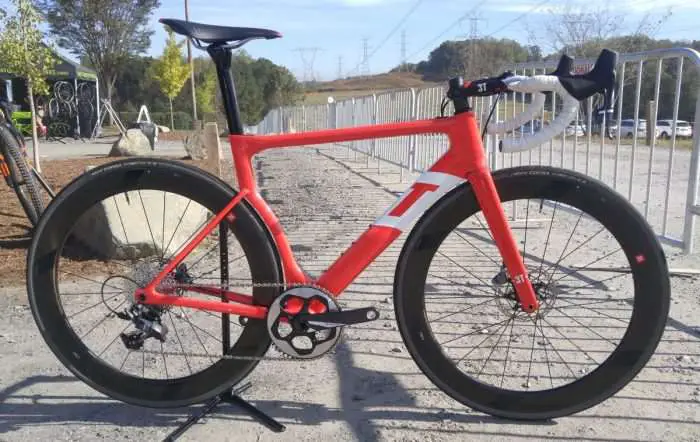 Citing the obvious, the 3T Strada is a road bike. If you’re reading this article and wondering, “why the heck is this bike featured on Gravel Cyclist?” Well, that’s because it’s a side project/development from the 3T Exploro – the company’s aero gravel bike – and if you continue reading, you’ll see why the 3T Strada is relevant.
Citing the obvious, the 3T Strada is a road bike. If you’re reading this article and wondering, “why the heck is this bike featured on Gravel Cyclist?” Well, that’s because it’s a side project/development from the 3T Exploro – the company’s aero gravel bike – and if you continue reading, you’ll see why the 3T Strada is relevant.
Moving past the Strada’s relationship to the Exploro gravel bike is when things get a little more interesting. The Strada should be capable of fitting 28mm – 30mm wide roadie tyres, which would make it a fine performer for Roubaix type events, i.e. Rouge Roubaix, Tour of Battenkill, etc. I cannot speak for Battenkill, but I have frequented Rouge Roubaix a couple of times. Imagine 105 miles / 168kms on road bikes… across at least 35 miles of Louisana’s dirt and gravel roads including the Tunica Hills, some of which would be a tough ride on a proper gravel bike. In fact, the last 20 miles of pavement at Rouge Roubaix are usually in worse shape than the dirt and gravel roads!
More recently, 3T and a multitude of manufacturers who produce road bikes, came to the realization that wider tyres roll nicely, even on smooth and not-so-smooth pavement, whilst providing a level of cush to the rider. Designers of bikes from 30 or more years ago already knew this, but the bicycle industry tends to reinvent the wheel every few years.
Scoffed at just a few years ago, 25mm wide tyres are the norm in the Euro pro roadie ranks nowadays, while 28mm tyres are seen on more and more road bikes belonging to us mere mortal weekend warrior types.
But, roadie tyre clearance isn’t the really interesting part about the 3T Strada.
The photo above is where the 3T Strada gets very interesting. A single chainring / 1x road bike?! What the eff? There isn’t even a front derailleur mount?!
You could be excused for thinking that 3T is slightly insane, but they believe a single chainring / 1x road bike is the future. In the world of gravel riding and racing, single and double chainrings have been a hot topic. Choices are good and these are legitimate first world problems 🙂
Be sure to check out our 1x / 2x video, filmed at the 2017 Rebecca’s Private Idaho.
So, does a single chainring / 1x drivetrain make any sense on a road bike?
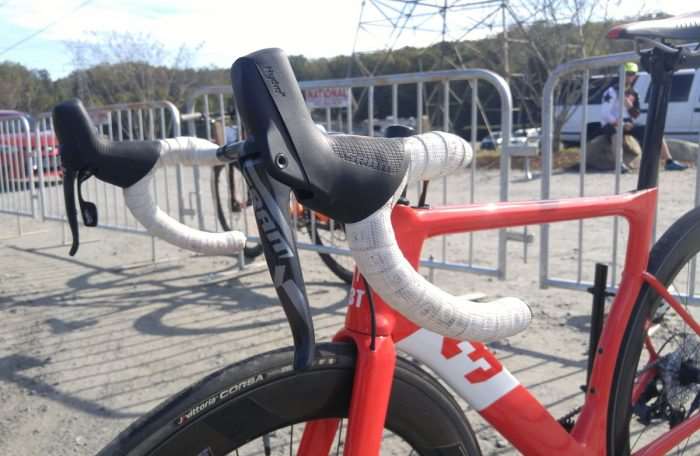
3T’s single chainring philosophy is “Paradigm Shift: 1xAERO”.
“With all aero bike developments of the past 20 years, the drivetrain was never really tackled. So we did it. Going 1x eliminates a front derailleur and chainring to significantly reduce the obstruction for airflow close to the frame. And 1×11 gives you plenty of options for gears, especially with the new closely-spaced wide-range 9-32 cassettes from 3T.”
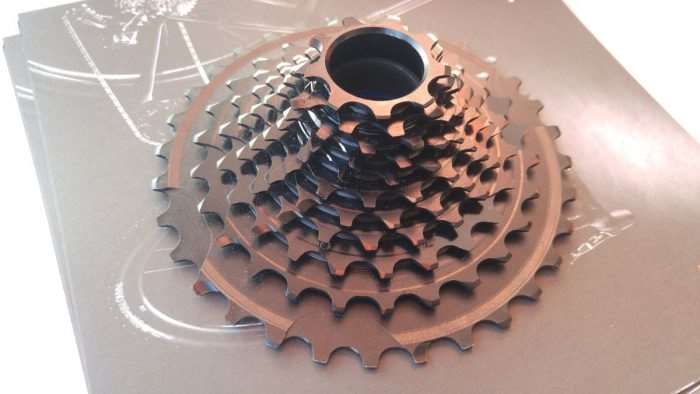
Whether you believe there is an aerodynamic advantage by ditching the front derailleur, especially if you remember there is a rider’s leg churning up the air nearby, is subjective. The gravel bike crowd has different reasons for running 1x drivetrains on their bikes. Namely, when paired with a clutch rear derailleur, there is almost no chance of dropping the chain. Chain management is spot-on with the bumps and rough stuff of gravel, but when conditions get really nasty, the simplicity of a 1x drivetrain can be a bonus – think less is more – less stuff for mud and sludge to mess up.
Shimano and SRAM have done their research and development with their respective 1x drivetrain systems, but from what this editor has seen in the field and on new bikes, SRAM is leading the way in this area.
And, 3T has done their homework with gear calculations, the result being two 9-32 cassette offerings for the 3T Strada.
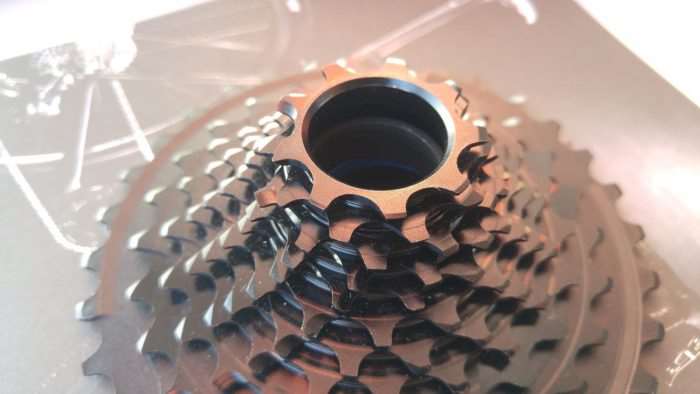
3T explains the cassettes as follows:
“Bailout: 9-10-11-12-13-15-17-19-22-26-32 (close throughout, bailout in the end when you REALLY need it).”
“Overdrive: 9-11-12-13-15-17-19-22-25-28-32 (even closer spacing for climbing, overdrive for descents).”
The cassettes are designed to be paired with:
- 36T chainring (equivalent to 48/34 double paired with a 12-30 cassette).
- 40T chainring (equivalent to 50/36 double paired with an 11-29 cassette).
- 44T chainring (equivalent to 54/39 double paired with an 11-28 cassette).
3T’s cassettes are likely to be priced somewhere around $US 300. Not cheap, but they are extremely light in weight, approximately 200 grams. I believe (could be wrong here) that some aluminium is involved in their construction.
Finally, 3T has this to say. “Is 11 gears enough? 30 years ago we had 2 x 6 gears of which only 8 were unique (the rest overlapped). Now we’re at 2 x 11. But more isn’t always better; more weight, more drag, more gear overlap and more complexity.”
“So instead of 2×11 with 14 effective gears, a front derailleur and an extra ring and shifter, 1×11 gives you the gears and range you need, fewer components, less weight, less drag and less hassle.”
So, what’s your take on this development? Does it open the door to further innovations in single chainrings / 1x for all types of cycling, including gravel? Or, will we see double and triple chainrings go the way of the dodo across the board?
As you contemplate these questions and think about writing your comments below, please enjoy this massive gallery of the 3T Strada road bike.
P.S. These photos were taken at the recent Fall Cyclofest in Charlotte, North Carolina. We have plenty of new and interesting bikes and tech relating to gravel from that show, so watch this space!
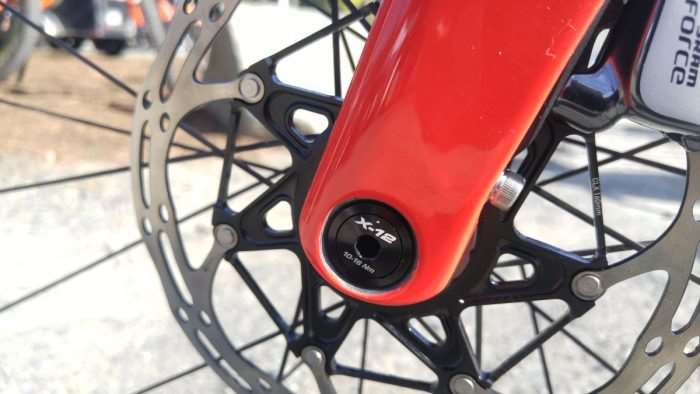
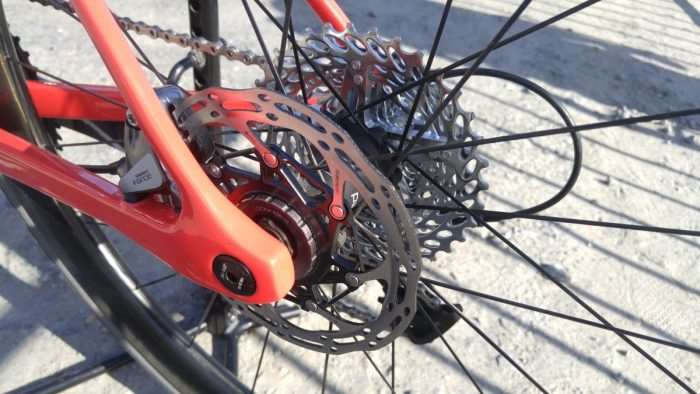
Thanks for reading!


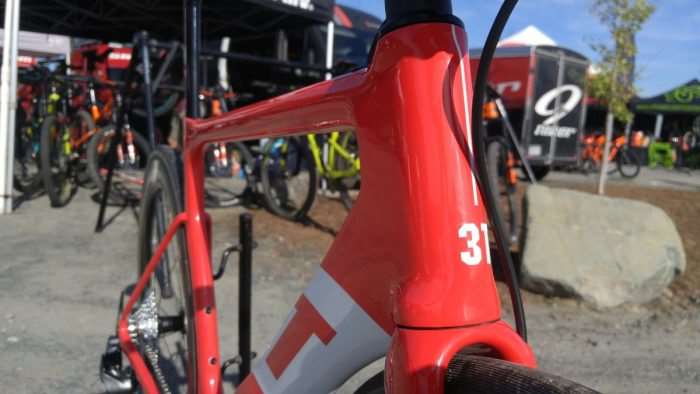
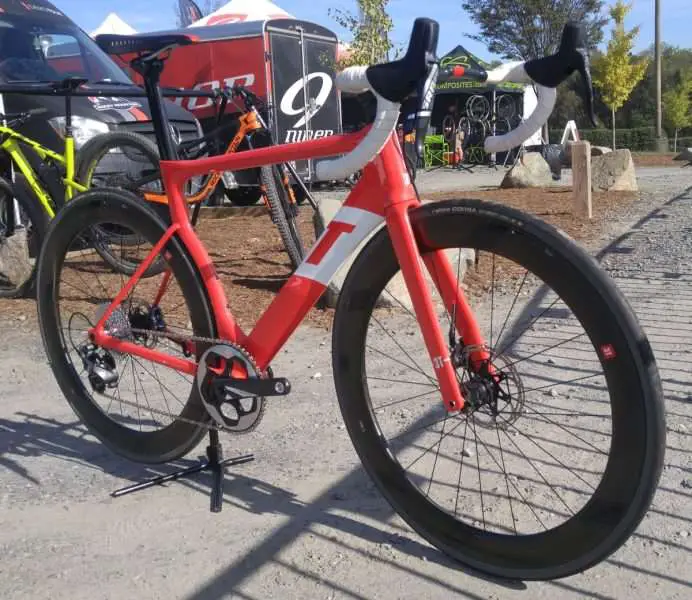
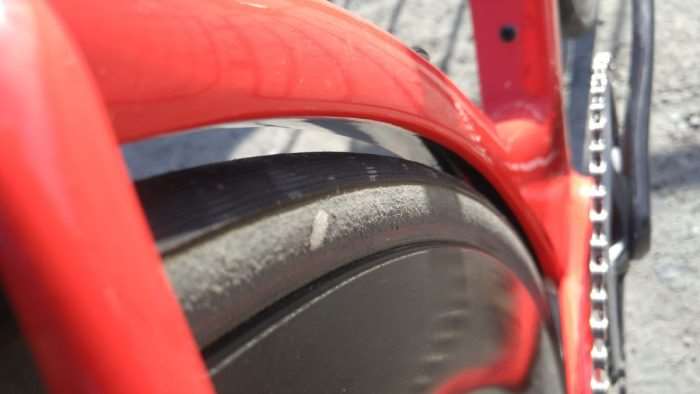
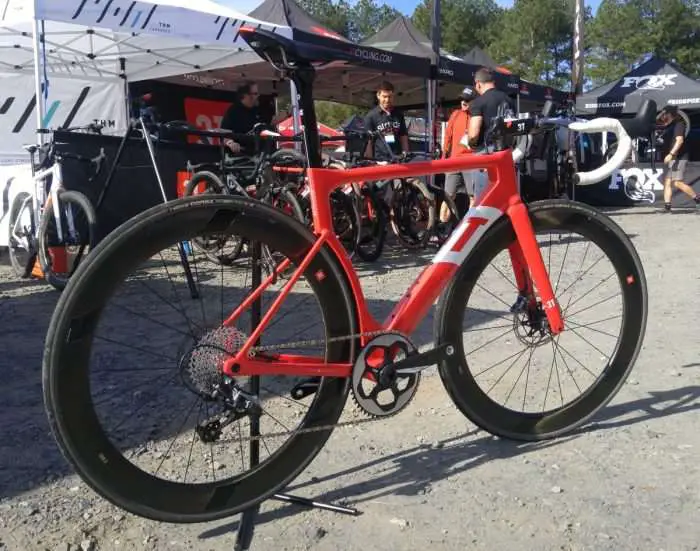
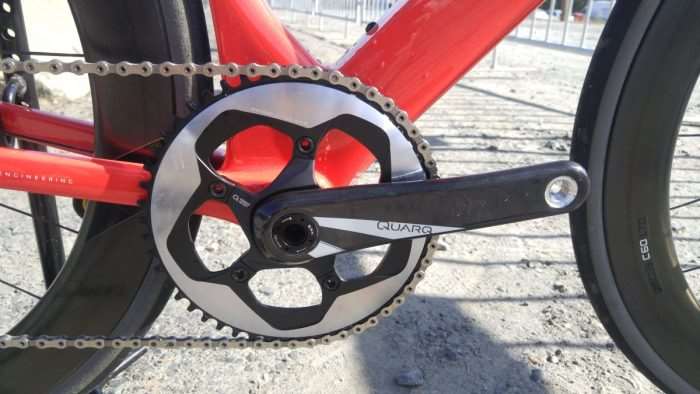
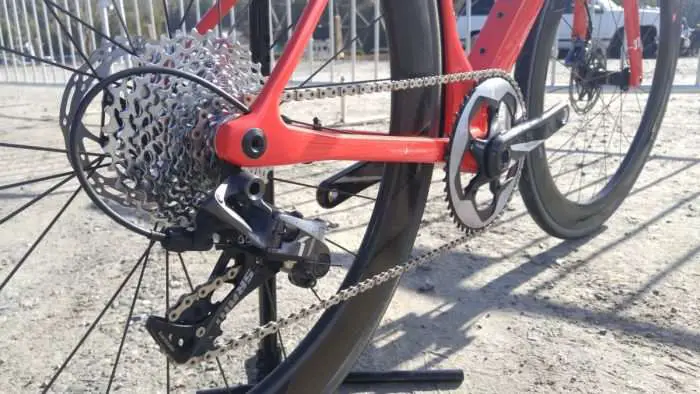
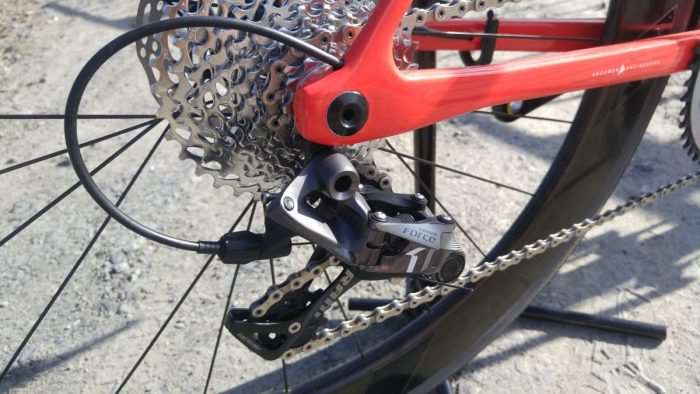
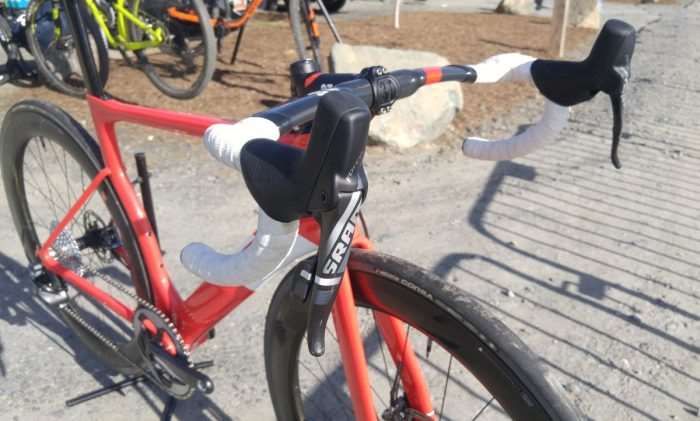
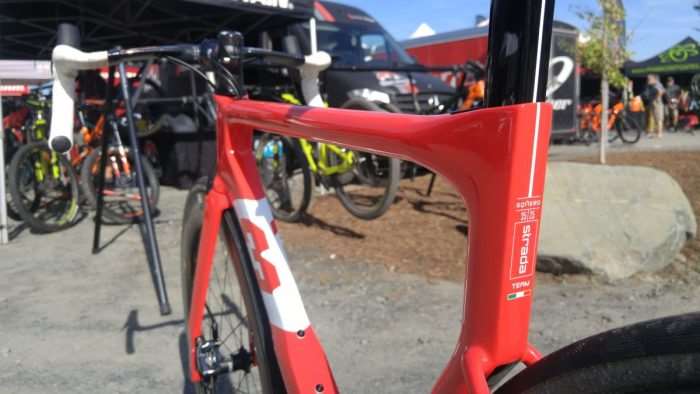
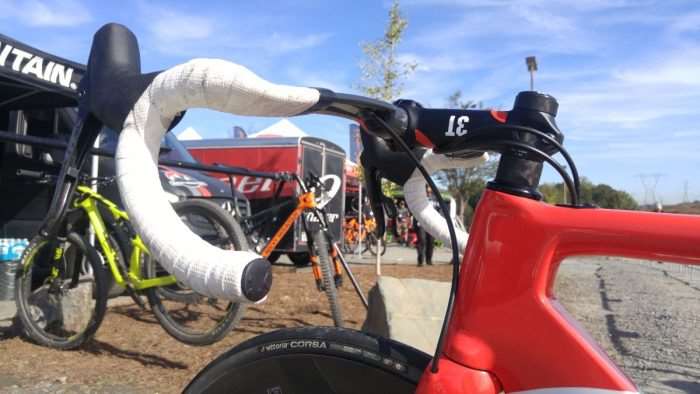
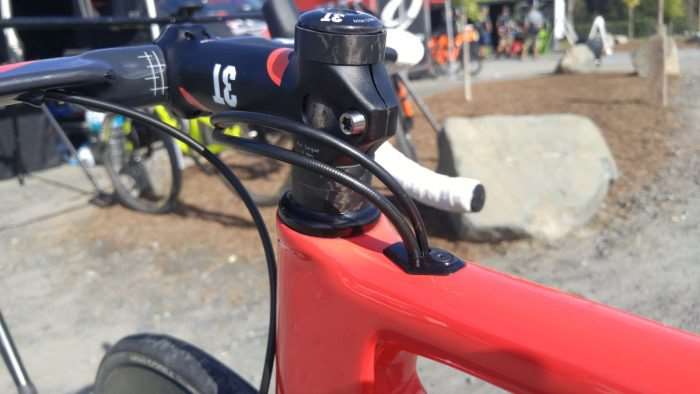
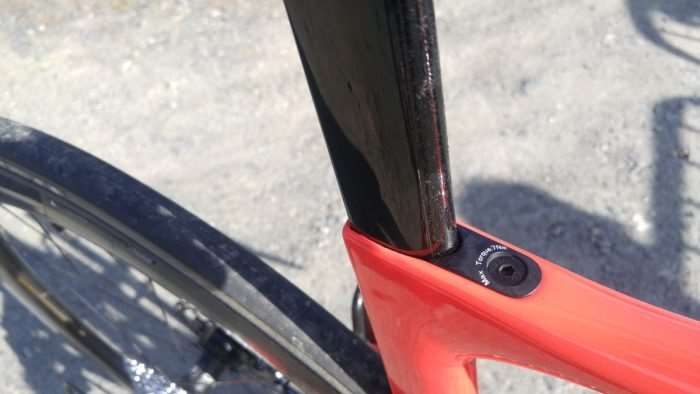
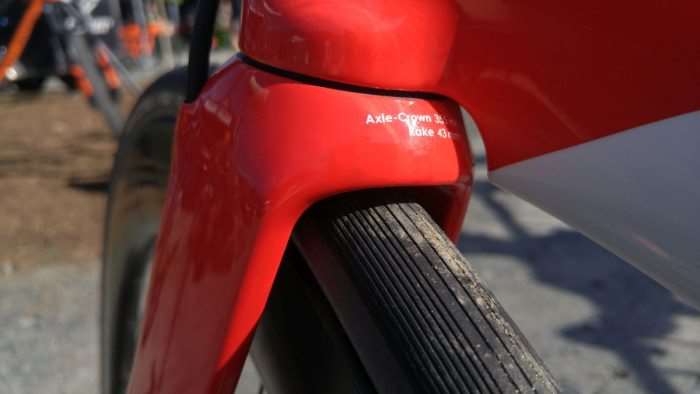
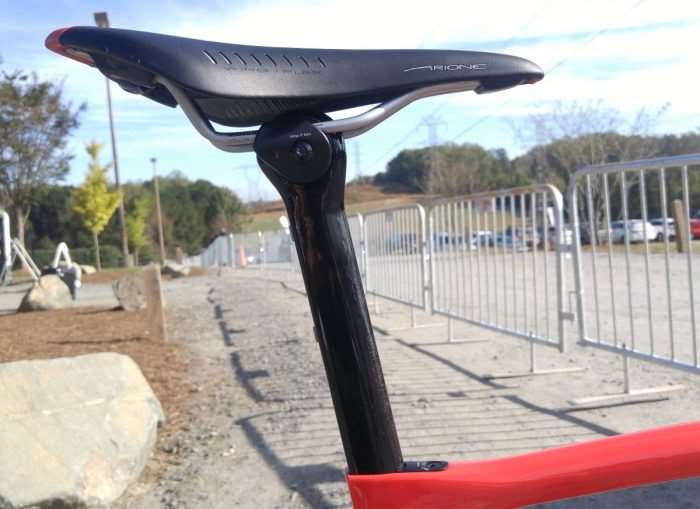
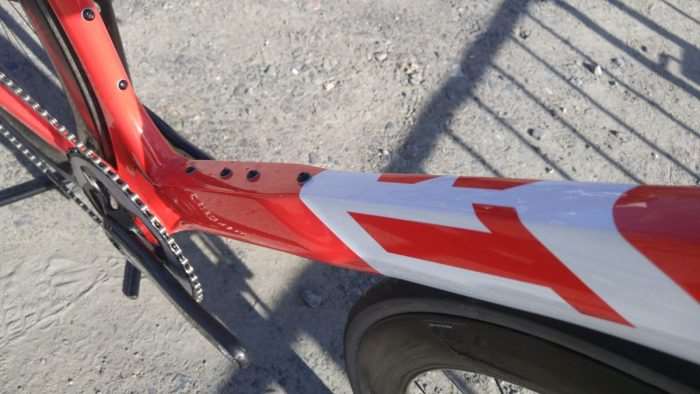
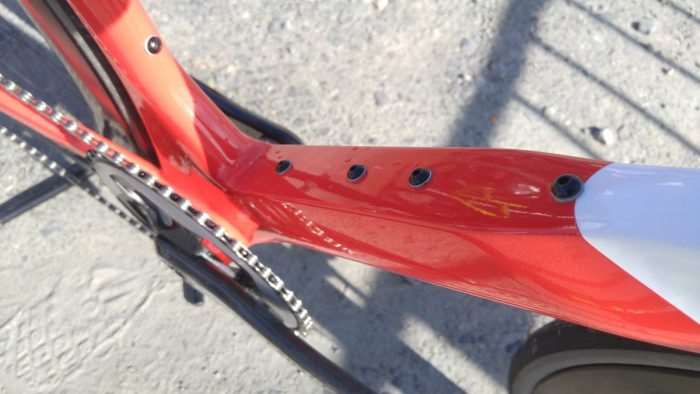
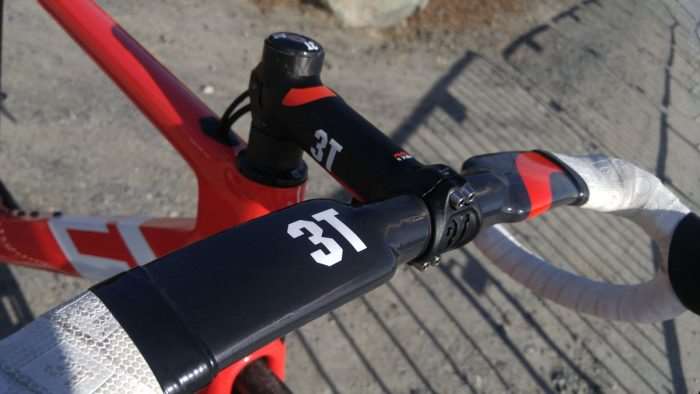
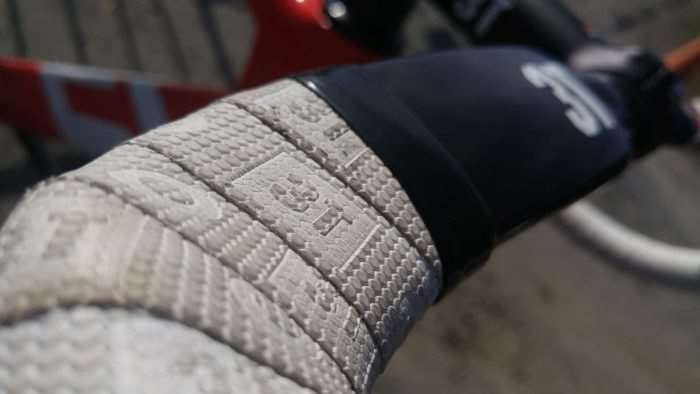
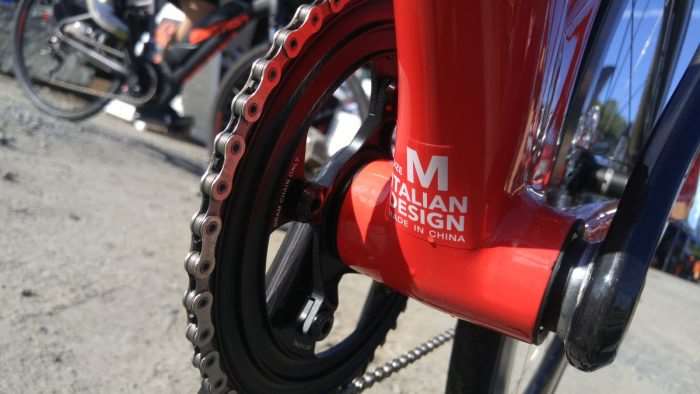
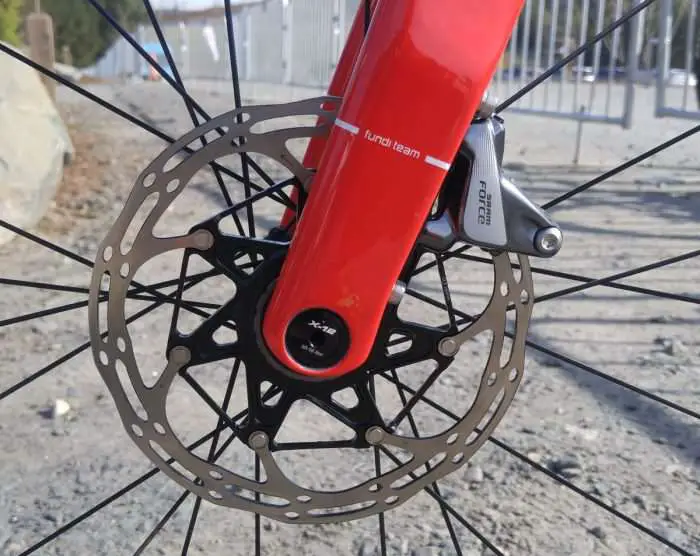
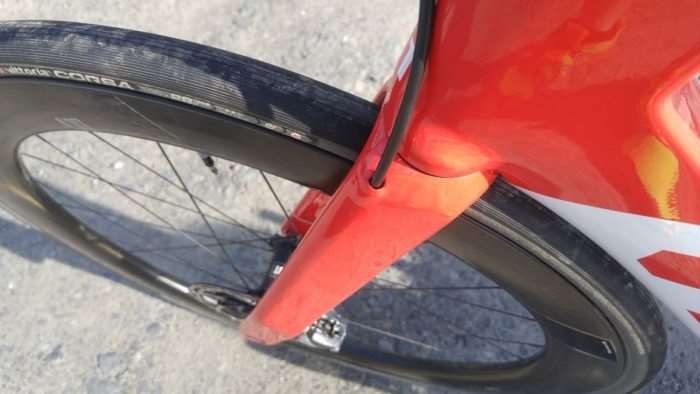
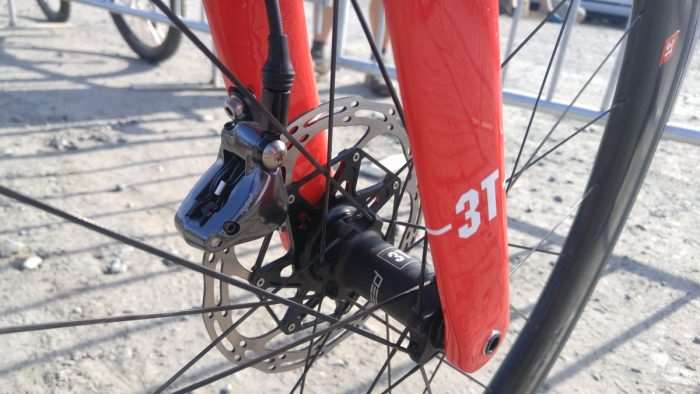
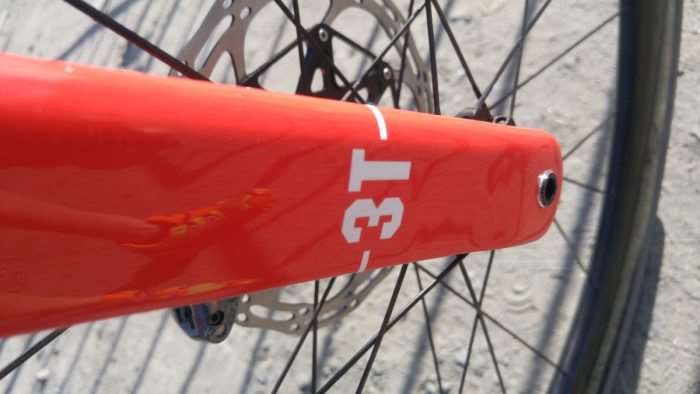
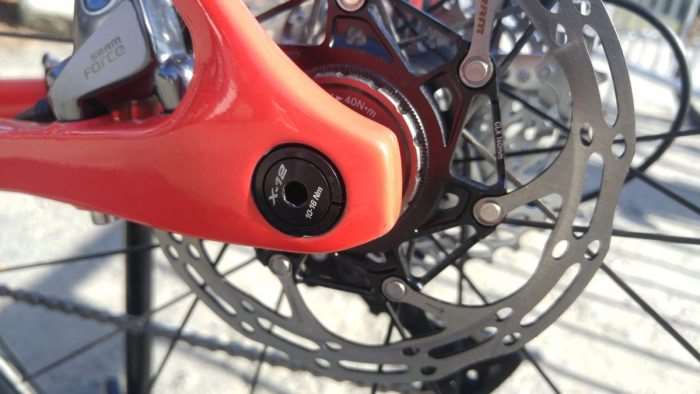
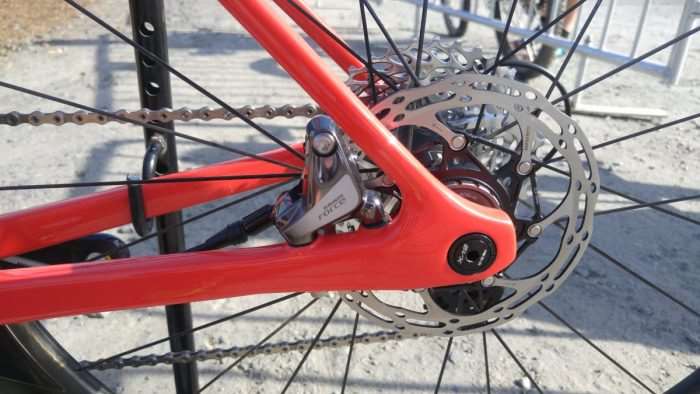
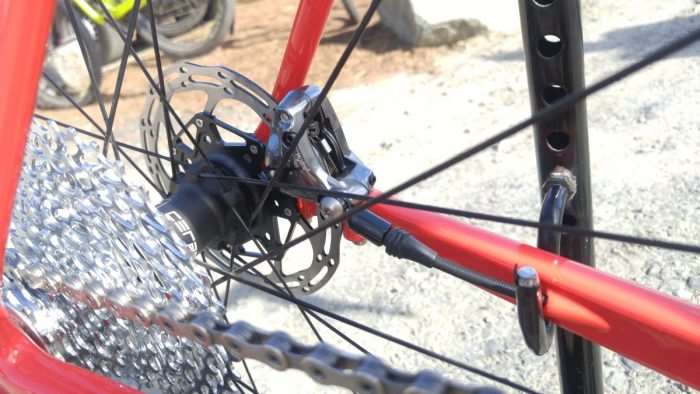
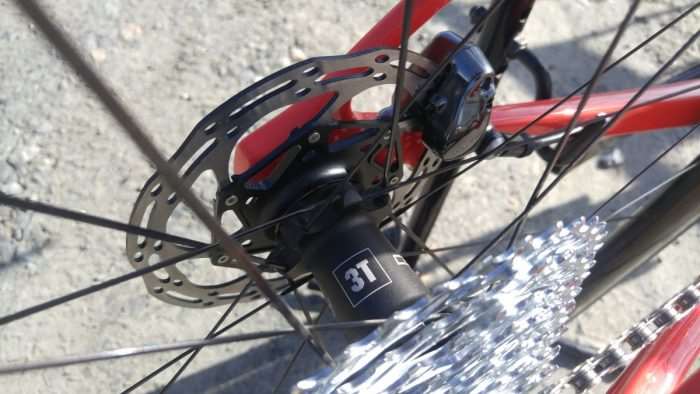
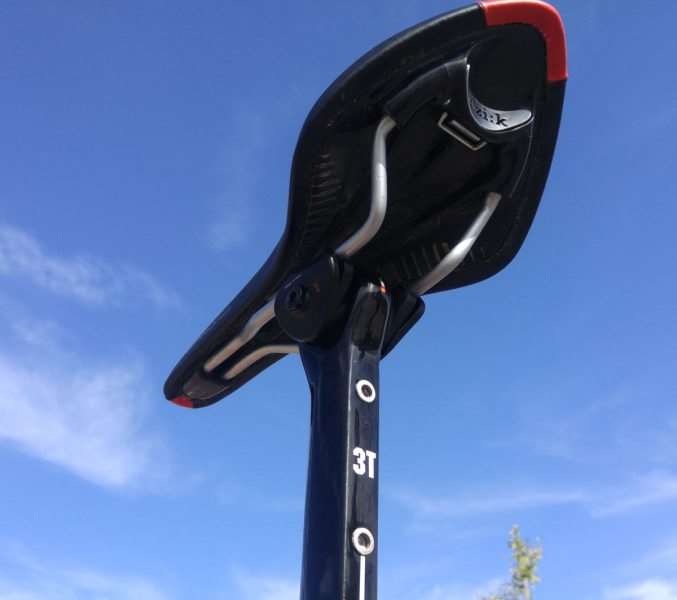
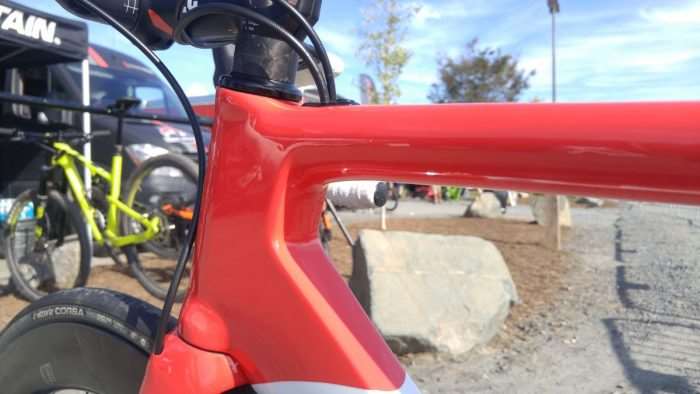
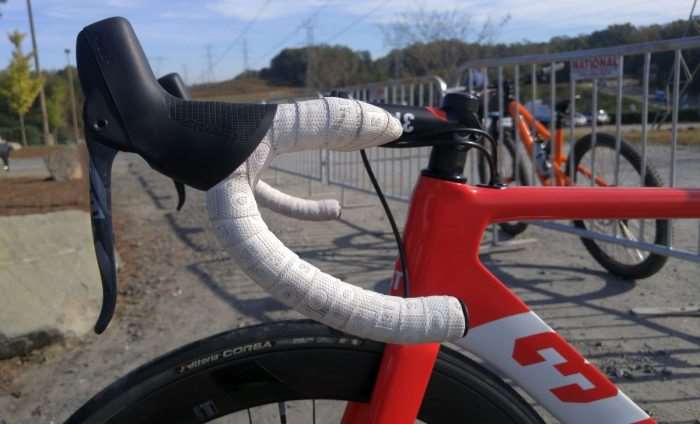
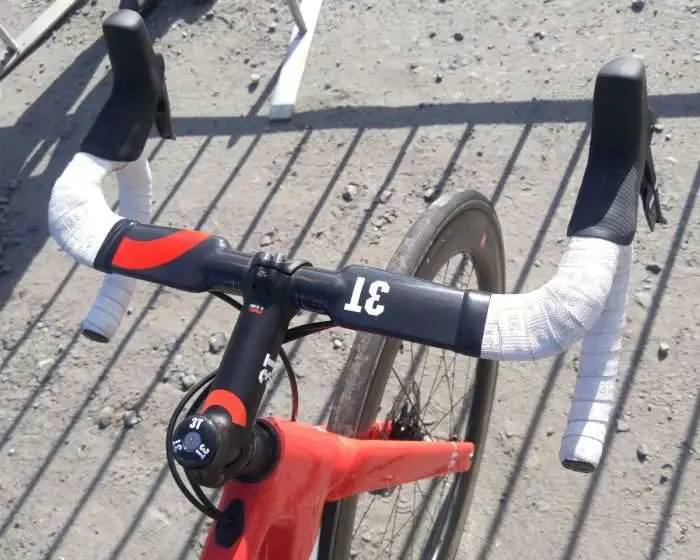
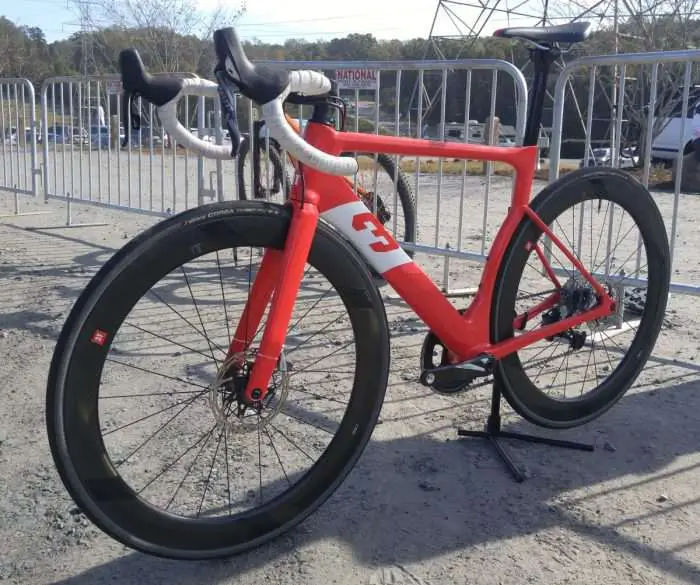
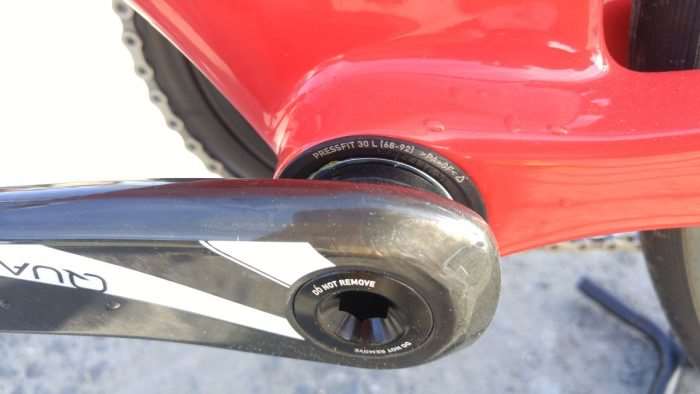
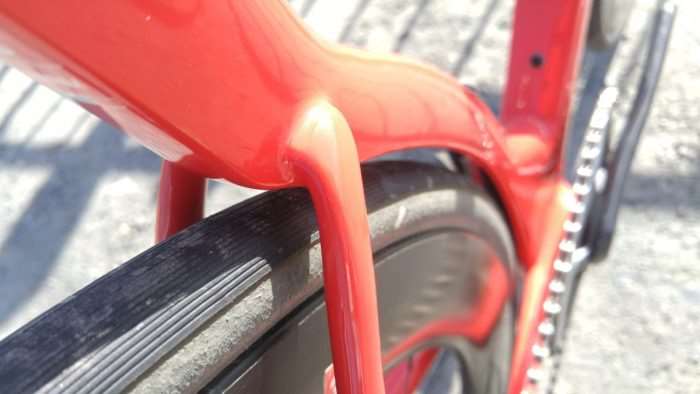
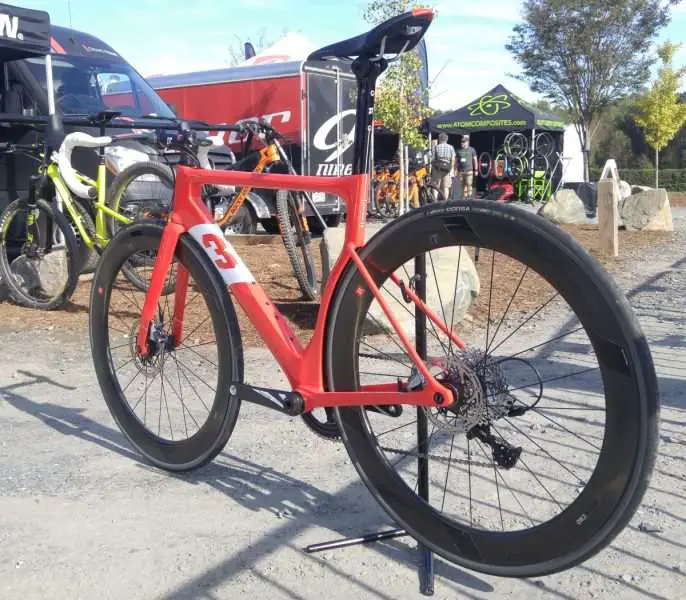
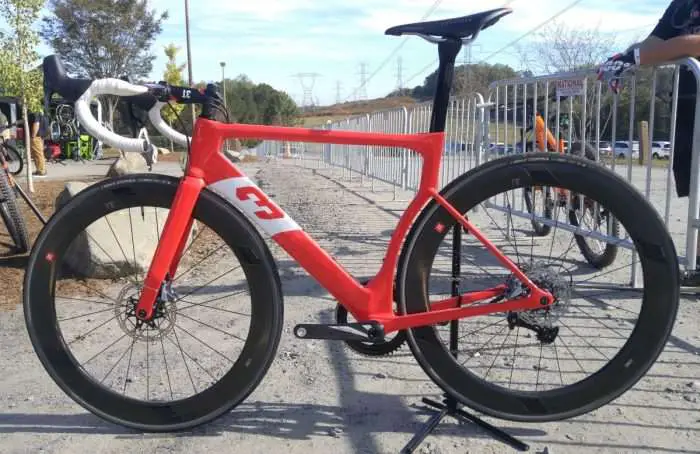
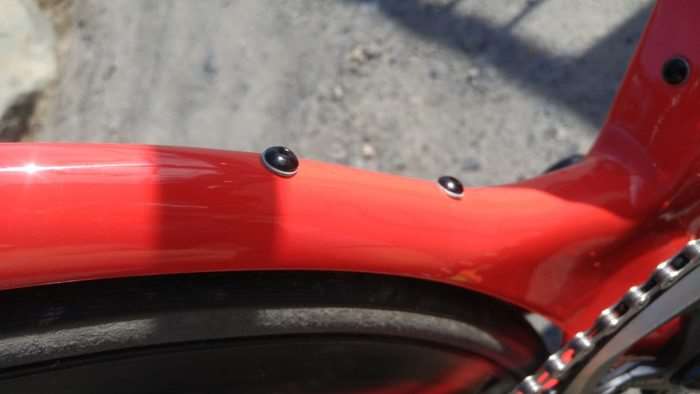
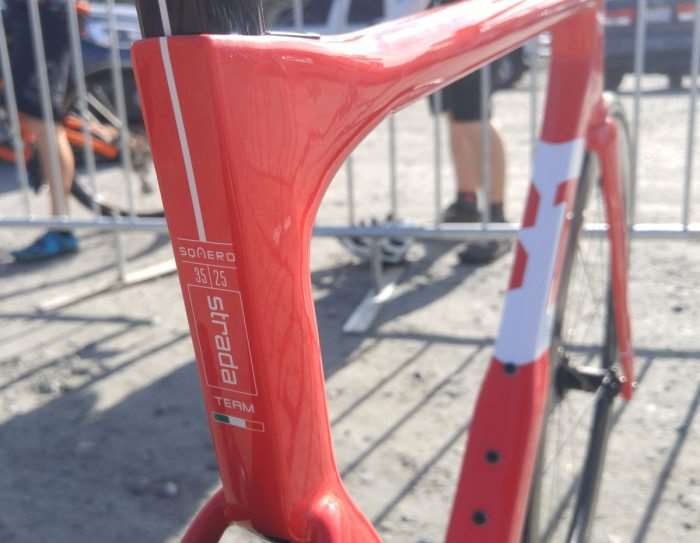
It’s an interesting idea. Like SRAM, 3T seem to believe that 1x will give them a marketing/publicity advantage, and I don’t doubt zealots will like it. However, there are plenty of negatives too, and I’m one of those who has zero interest in buying such a bike. Provided you’re happy with a narrower range, and/or bigger gaps between gears, then all is well, otherwise, not so much. Di2 is looking better to me all the time.
Stephen, beware of Di2. Once you go Di2, you won’t go back… this is speaking from experience when I switched over some eight years ago 🙂
True! I have Di2 2x on my gravel bike and it is absolutely wonderful. Smooth solid shifting front and rear no matter the conditions.
As an MTB rider gone road, 1X is absolutely the way to roll, since I couldn’t care less about gaps between cogs (what’d people do back in the day of 5- and 6-speed cassettes?! Gee golly gosh. ????).
Thanks to a SRAM 1X long cage derailleur, I run a SunRace CSMX80 11-50 cassette with a single ring and it covers all of the range I need with zero redundant gear combinations and no annoying front derailleur (I use only oval chainrings and they don’t do well with front derailleurs).
-Ed
What did WE do with 5 speed freewheels (there were no cassettes)? We suffered like dogs with 14-18 cassettes, 42-52 rings, and downtube friction shifters. Gee golly gosh.
I rode the 209km version of L’Eroica in Italy last year, and my gears were relatively nice considering – thank you late 1980’s Mavic. Despite having a 7-speed setup with a 28 tooth low cog, I got a real appreciation for gentlemen like you Mr GCWannabee – and for the pro racers from years past. Friction downtube shifters aren’t a problem, but toestrap pedals were a source of pain, and pushing bigger gears on the grades along the course, some of which were 20%, was a real challenge. Nowadays, we are completely spoiled, single chainring or otherwise.
That seems, to me, to be several levels worse than what we have today. I fully appreciate that many riders prefer to keep their cadence within a narrow, 5-10rpm range.
Would that more of those riders appreciate that some of us have no qualms dealing with a 30rpm range. For people like us, modern 1X is a real game-changer. I love having 400-500% range without overlap or chain rub! Not to mention this freeing up the left shifter position for other things, like operating my dropper post (which is exactly what I modified my left shifter to do on my own gravel bike).
-Ed
I think that to really make this work well they will need to make it easy to customize the cassettes to match the rider and the conditions. You need to pick the chainring size to get the climbing gear you need based on the terrain, but then this leaves you stuck with where they put the closely spaced middle cogs you use for cruising on the flats. It also makes a large difference if you cruise at 80 or at 100 rpm on which cogs you want closely spaced. They seem to get this to some extent in that they offer the two cassette choices above, but there still are lots of other possible combinations.
Agreed. I think there is a lot of room for tinkering here.
That’s a beautiful machine! I can see where 1x on a high end road bike makes sense for strong riders like Tony Martin. I saw an interview with his team mechanic who said they gear his bikes based on the fact that he spends the vast majority of his time in the big ring. For me? I will stick with a 2x set up for road and gravel. On big tires: I bought a set of Hutchinson Sector 32 mm tires and I love them. I thought they would be nice winter trainer tires, but I mounted them for the Alpine Loop Gran Fondo (Oct 1, Harrisonburg, VA) and could not have been happier with their feel and performance on pavement and gravel. I see no appreciable difference in speed over the segments I’ve ridden so far with these relatively large tires.
Who wants to place bets on when aqua blue sport starts running 2x on their bikes?
Funny you mention that… I heard a rumor about that already…
I now own both a 1x, and 2x gravel bike. Both use 11 speed clusters. The 1x has 40T chainring and an 11-40 cassette ; the 2x has a 11-36 with a 46/36 up front. Despite having the same gear range for lowest to highest; and despite the lighter weight and simplicity of the 1x system; given the choice, I would always opt for the 2x system. In fact, were a good 3x electronic available; I would probably prefer that the most. I just don’t get it. For me, riding a 1x makes as much sense as riding single speed. It just means that most of the time you are less likely to find an optimal gear for the situation.
Correction — The gear range is greater on my 2x —- I have a higher gear on the 2x — 46/11 vs. 40/11. Frankly, I ignored the high end because I rarely use either gear, while I frequently use the equivalent 40/40 or 36/36 on the steep NH hills.
Bob, Shimano XTR Di2 is available in a triple. It is hard to find, but it is out there.
My favourite road bike and on which I do most of my road training miles is a FIXIE…..1×1 makes a lot of sense to me, that’s probably why my friends think I’m mad…..then on top of that I ride the GRAVEL…..
Hi Steve – Have you considered the ultimate fixie – a unicycle. Check this out: https://www.youtube.com/watch?v=GUZuyMVdVcc .
Just joking. I agree, fixies are fun to ride and give you a sense of control and connection. I wouldn’t recommend it on NH’s dirt roads though.
Hi Bobk
I am speechless!… and I thought I was crazy for riding FG.
Most of my comments here are “tongue in cheek”, however, as an ageing gravel cyclist, I’ve found the Fixie seems to have helped my gravelling, in terms of stamina on long climbs and block head winds. Both of my Gravel bikes are 2 X’S, haven’t tried 1 X, so can’t make that judgement
One Mr Corey Hilliard rode and finished Gravel Worlds in Nebraska this year – on a fixie cross bike – amazing.
I’ve contemplated converting an old CX frame of mine to fixed, but then you have to consider rear frame spacing, maybe S.S. would be easier.
Back to the beautiful 3T bike being considered here. Jom, where will all this technology lead us to, frames built from methral or fresh air and group sets connected to our thought patterns?
Hi guys – I’m not opposed to fixies, 1x, or even unicycle mountain biking for that matter. I’m a bike nut — I like all bikes (including almost bikes like trikes and unicycles). My concern is that companies are trying to promote 1x as the “standard” for gravel bikes. To wit — SRAM’s argument that there is no need for a re-design for the eTap front der. for gravel bikes.
A 1x fan here, based in D2R2 country. I appreciate the simplicity on dirt/gravel – specifically, the lack of chainsuck in, err, sucky conditions. That said, for the intended usage of the Strada, I can see wanting to customise the cassette from day to day. Uniglide, anyone?
I’m also going to divert the conversation a little. Do you know the model of 3T handlebars on the pictured Strada?
To answer my own question, possibly the Aeronova Team:
https://www.3tcycling.com/road/en/bike-components/handlebars/aeronova-team/
Re road gearing: Back when I started riding, the normal racing gearing here in Oz was 52×42, with something like a 13-18 6 speed freewheel. When 7 speeds became available most people used 12-18; larger cogs were seen as a sign of weakness. Since I was a tourist, I always thought this was insane.
Nowadays, the smallest Dura-Ace 9100 cassette is 11-25, and the largest inner ring commonly used is 39T, so way lower than 42×18. It seems most people are actually running 11-28, and 50×34 rings are common too; Froome was reported to be using 38×32 for some climbs in this year’s TdF. HTFU seems to be slowly being replaced by common sense. (Or weakness.)
Any idea about US distribution for this thing? Right now (January 2018), I’m only seeing a German website.
3T USA are distributing the bike out of California. Interestingly enough, we took collection of a review sample that we’ll be building soon. Even though it is not a gravel bike, this will be a combo review with Gravel Cyclist / BikeRumor.com